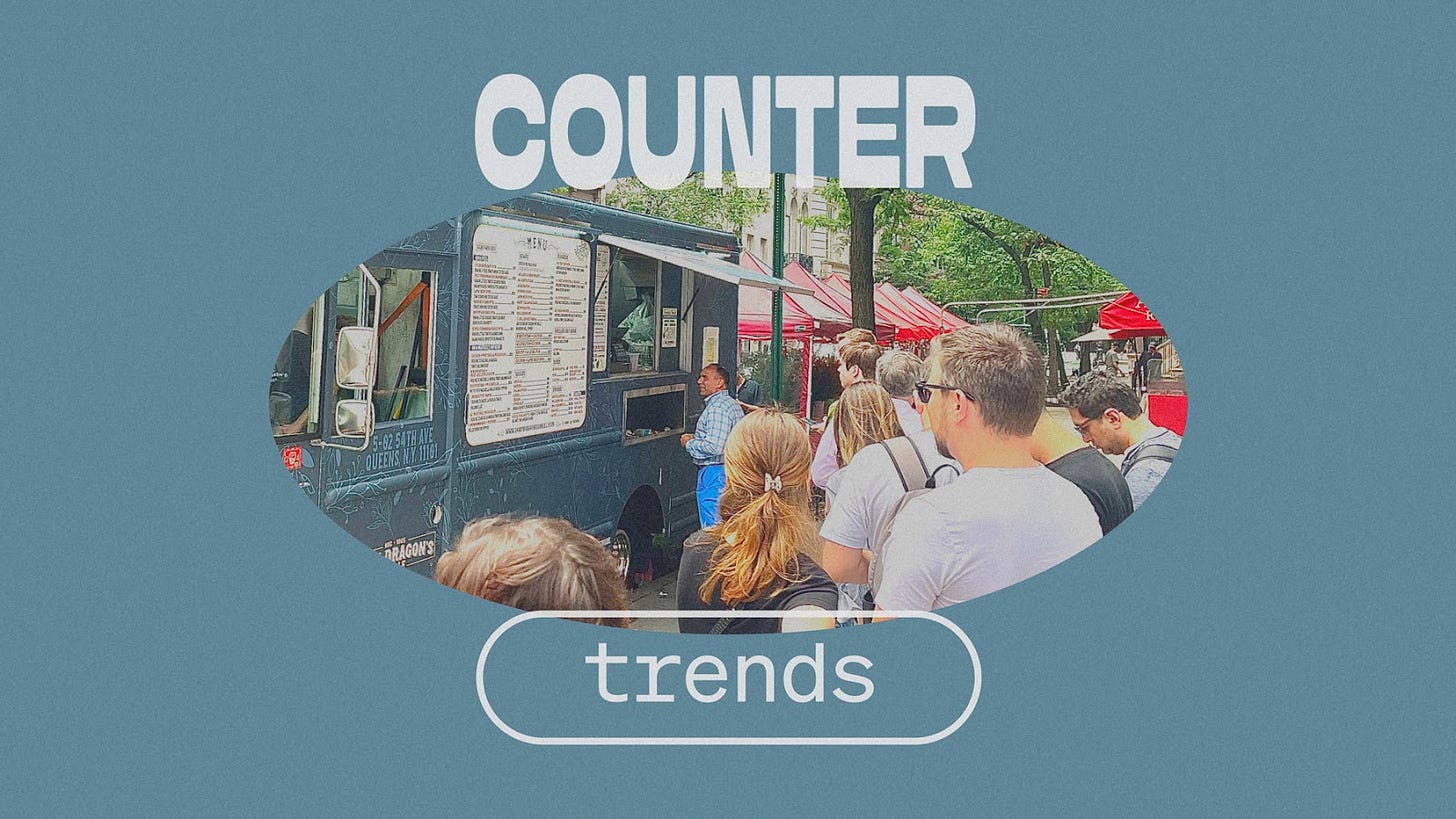New tech for legacy restaurants
Rejuvenating — but not remaking — two decades-old businesses
This look at the future of hospitality is sponsored by Square.
One of the first things Konstantinos Dragonas had to do when he joined the family business was decide what to call it. The food cart his father started decades before was ready for a glow-up, but first it needed a name.
Konstantinos signed on to help his father grow his life’s work. Tony — the restaurant’s eventual namesake — served meals from a street cart on the corner of 62nd Street and Madison Avenue in New York, just like he’d done since 1986. Tony knew the entire neighborhood, and the neighborhood knew him. But in order to grow to something (much) bigger, the cart needed a major upgrade.
I talked to Konstantinos recently for my series, called Counter Trends, on The Bottom Line for Square. His dad’s street cart has grown into a food truck called Tony Dragon’s Grille, staffed by eight employees six days per week, and we talked about how technology helped the business double pickup orders.
That stat is impressive — that’s why it’s in the headline — but as we talked, I thought more about the idea of an evolving legacy and how modern tech might best serve a business like Tony Dragon’s Grille without killing its soul.
Read more: NYC’s Tony Dragon’s Grille Doubled Pickup Orders With Modern Tech
Similarly, SF Bay Area favorite La Mediterranee had to modernize its operations.
The restaurant opened its doors in 1979 and now has a handful of locations in and around tech-friendly San Francisco. Trevor Ledergerber, a La Med (as it’s lovingly called) co-owner, has worked there since 2012. He walked me through the restaurant’s upgrades — replacing the “charming” (per Trevor) cash register with a modern point of sale system was a no-brainer. But other things had to stay, like the restaurant’s attentive and generous service, including a soup or salad with every entree.
A sit-down, sides-included experience feels like a relic of the past… because it is. As counter-service and fast-casual brands proliferate near the Berkeley location of La Mediterranee where Trevor works, choosing technology (like digital ordering and a kitchen display system) that supports modern operations was critical for survival.
Read more: Bay Area Stalwart La Mediterranee Has Kept Its Staying Power
For both decades-old restaurants, the right tech made a real difference.
But the things that stayed the same kept them special.
Back on 62nd and Madison, there’s probably no way that the elder Dragonas could’ve imagined what his business would eventually become; serving hundreds of hungry New Yorkers daily. It’s in part thanks to an ordering website and larger staff wielding the right tools to help the business grow. But it’s mostly because of the business’s reputation and legacy as a great place to get lunch.
“Menu items have changed, but a lot of the clientele is still the same,” Konstantinos said. “I still have customers that come [by] and tell me that they used to know me when I was four-and-a-half feet tall. I get that all every day.”
It’s the same vibe in Berkeley, around the corner from the country’s top-ranking public university, where a restaurant steeped in its own traditions draws crowds of regulars. Parents pop into La Med for a meal after dropping their kids off at school year after year, Trevor told me. Former university students return, decades later, for the experience they remember. And that’s not just his experience talking — it’s in the data.
“We’re usually at about 40 percent repeat guests,” he told me, pausing. “Maybe 50-50… that’s what the Square software says.”
Even at a restaurant that thrives on old-school vibes, it’s nice to get a tech-assisted gut check.
Thanks to Square for sponsoring this coverage, supporting my deep dives into the top challenges (and wins!) for local restaurants. Read more about these and other trends in my series Counter Trends, published on The Bottom Line.





